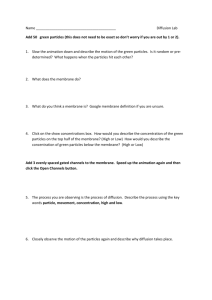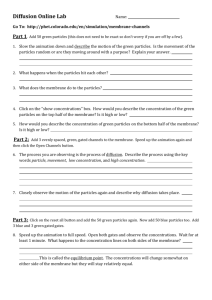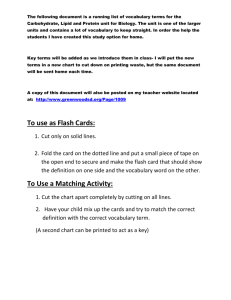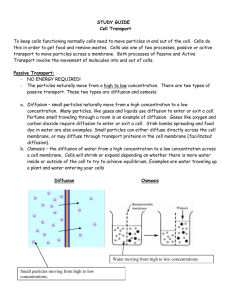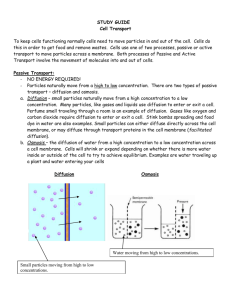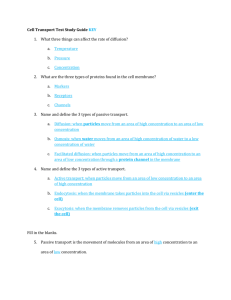Phet Lab
advertisement
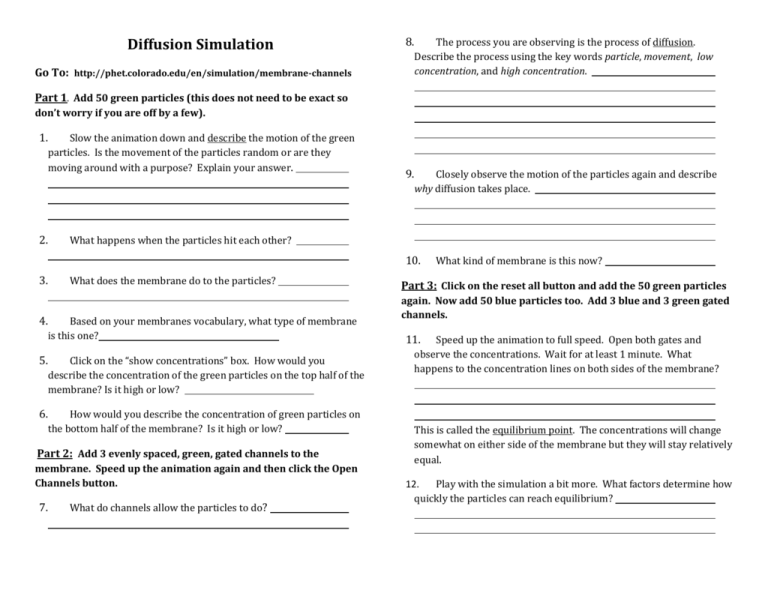
Diffusion Simulation Go To: http://phet.colorado.edu/en/simulation/membrane-channels 8. The process you are observing is the process of diffusion. Describe the process using the key words particle, movement, low concentration, and high concentration. Part 1. Add 50 green particles (this does not need to be exact so don’t worry if you are off by a few). 1. Slow the animation down and describe the motion of the green particles. Is the movement of the particles random or are they moving around with a purpose? Explain your answer. 2. 9. Closely observe the motion of the particles again and describe why diffusion takes place. What happens when the particles hit each other? 10. 3. What does the membrane do to the particles? 4. Based on your membranes vocabulary, what type of membrane is this one? 5. Click on the “show concentrations” box. How would you describe the concentration of the green particles on the top half of the membrane? Is it high or low? What kind of membrane is this now? Part 3: Click on the reset all button and add the 50 green particles again. Now add 50 blue particles too. Add 3 blue and 3 green gated channels. 11. Speed up the animation to full speed. Open both gates and observe the concentrations. Wait for at least 1 minute. What happens to the concentration lines on both sides of the membrane? 6. How would you describe the concentration of green particles on the bottom half of the membrane? Is it high or low? Part 2: Add 3 evenly spaced, green, gated channels to the membrane. Speed up the animation again and then click the Open Channels button. 7. What do channels allow the particles to do? This is called the equilibrium point. The concentrations will change somewhat on either side of the membrane but they will stay relatively equal. 12. Play with the simulation a bit more. What factors determine how quickly the particles can reach equilibrium?

